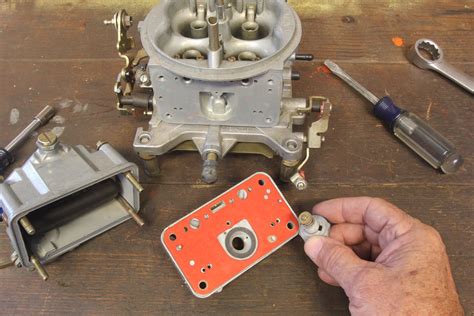Holley Carb Tuning: Beyond the Basics
For decades, Holley carburetors have been a staple in the performance world, renowned for their power and tunability. While basic carb tuning might seem straightforward, mastering the art of Holley carb optimization unlocks significant performance gains and drivability improvements. This guide delves beyond the fundamentals, exploring advanced techniques and fine-tuning strategies to help you unleash your engine's full potential. We'll tackle common questions and issues, ensuring you can confidently tune your Holley carburetor for peak performance.
What are the common problems with Holley carburetors?
One of the most frequent issues with Holley carburetors is poor fuel delivery. This can manifest as hesitation, stumbling, or a lack of power, particularly under acceleration. Often, this stems from incorrect jetting, float level problems, or issues with the accelerator pump. Another common complaint is rough idle. A rough idle can indicate problems with the idle mixture screws, vacuum leaks, or a malfunctioning idle speed circuit. Finally, lean or rich conditions can severely impact performance and fuel economy. A lean condition can lead to overheating and potential engine damage, while a rich condition wastes fuel and reduces power.
How do I adjust the idle mixture screws on a Holley carburetor?
Adjusting the idle mixture screws requires precision and patience. These screws control the fuel-air mixture at idle. The process generally involves:
- Starting with a clean carb: Ensure your carburetor is clean and free of debris.
- Setting the idle speed: Set the idle speed to the manufacturer's specification.
- Adjusting the mixture screws: With the engine warmed up, slowly turn each idle mixture screw in small increments (1/8th of a turn at a time), observing the engine's response. You’ll be aiming for the smoothest, highest idle speed. Generally, a slightly richer mixture (turning the screw slightly counterclockwise) is preferred for a smoother idle.
- Alternating adjustments: Adjust one screw, then the other, iteratively refining the mixture until you achieve the optimal setting.
- Listening for changes: Listen closely to the engine's sound. A smooth, steady idle indicates a proper mixture. A popping sound might indicate a lean condition, while a sputtering sound might suggest a rich condition.
How do I adjust the float level on a Holley carburetor?
Maintaining the correct float level is crucial for consistent fuel delivery. An improperly adjusted float level can lead to fuel starvation or overflowing, significantly impacting performance. The procedure varies slightly depending on the Holley carburetor model, so consult your carburetor's specific instructions. Generally, you'll need to:
- Access the float bowl: Remove the float bowl cover to access the float.
- Measure the float level: Use a suitable tool (often a special gauge is recommended) to measure the distance between the float's surface and the bowl's gasket surface.
- Adjust the float: Bend the float's arm slightly to adjust the fuel level to the manufacturer's specifications. Tiny adjustments can make a big difference.
- Reassemble and test: Reassemble the float bowl and retest the carburetor's performance.
What is the purpose of the accelerator pump on a Holley carburetor?
The accelerator pump provides a squirt of fuel when the throttle is suddenly opened, preventing hesitation and ensuring a smooth transition from idle to acceleration. Proper adjustment ensures this squirt is adequate but not excessive. Problems with the accelerator pump shot can cause a noticeable hesitation or stumble during acceleration. This might require adjusting the pump's stroke or changing the pump cam.
How can I diagnose vacuum leaks on a Holley carburetor?
Vacuum leaks can cause a host of problems, from poor idle to inconsistent performance. Diagnosing vacuum leaks involves careful inspection and testing. Common areas to check include:
- Manifold gaskets: Check for cracks or leaks in the manifold gaskets.
- Carb base gasket: Ensure a good seal between the carburetor and the intake manifold.
- Throttle shaft seals: Check for wear or damage to the throttle shaft seals.
- Vacuum lines: Inspect all vacuum lines for cracks, looseness, or leaks. You can test for leaks using a vacuum gauge or a spray bottle with carb cleaner.
Conclusion: Mastering Holley Carburetor Tuning
Tuning a Holley carburetor effectively requires a blend of theoretical understanding and hands-on experience. While this guide provides valuable insights into advanced tuning techniques, remember to always consult your specific carburetor's instructions and consider seeking expert assistance if needed. Mastering these skills leads to improved performance, enhanced drivability, and a deeper appreciation for the mechanical nuances of your engine. Through careful adjustment and attention to detail, you can unlock your engine's true potential and enjoy the exhilarating performance a perfectly tuned Holley carburetor delivers.

